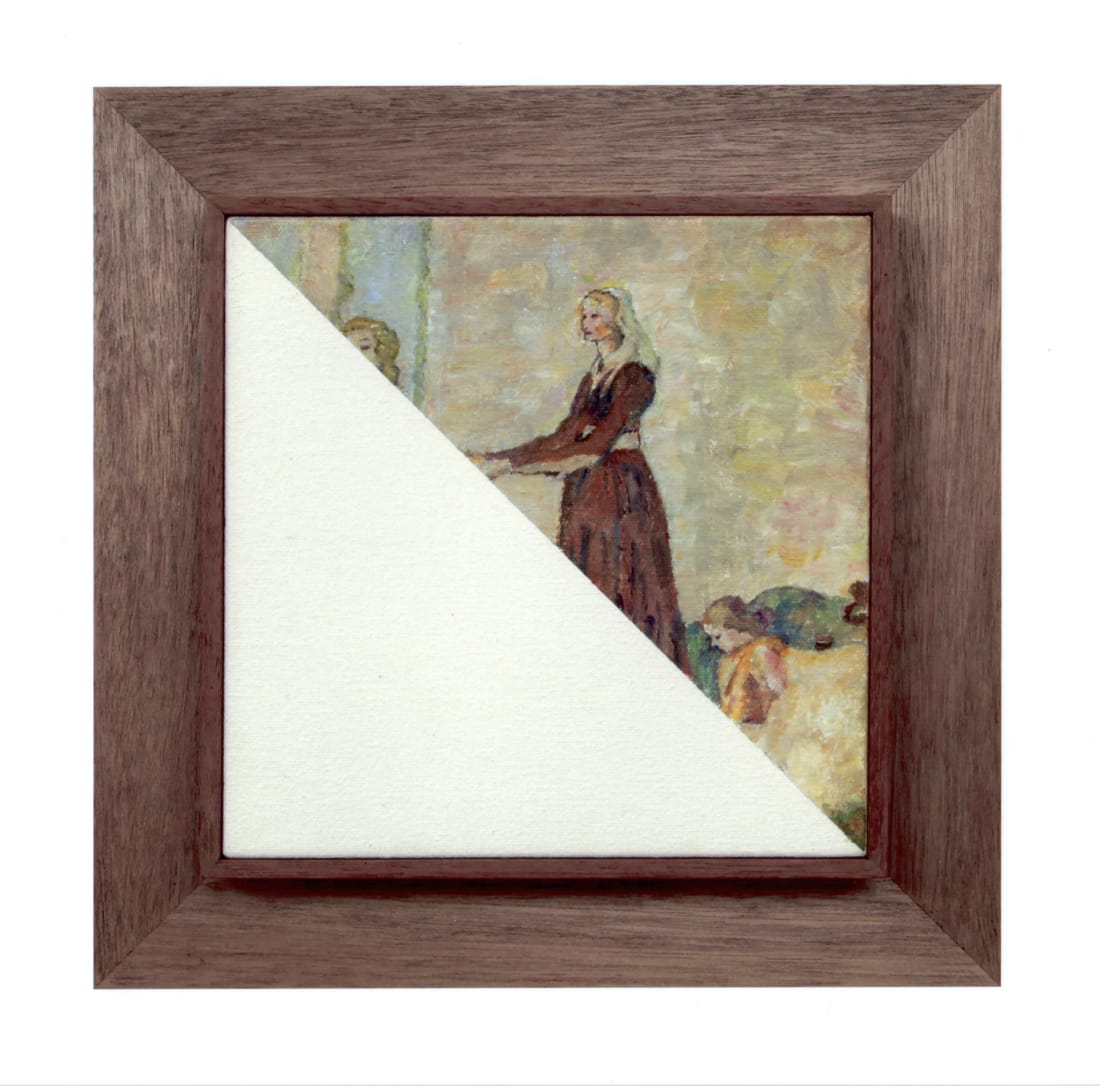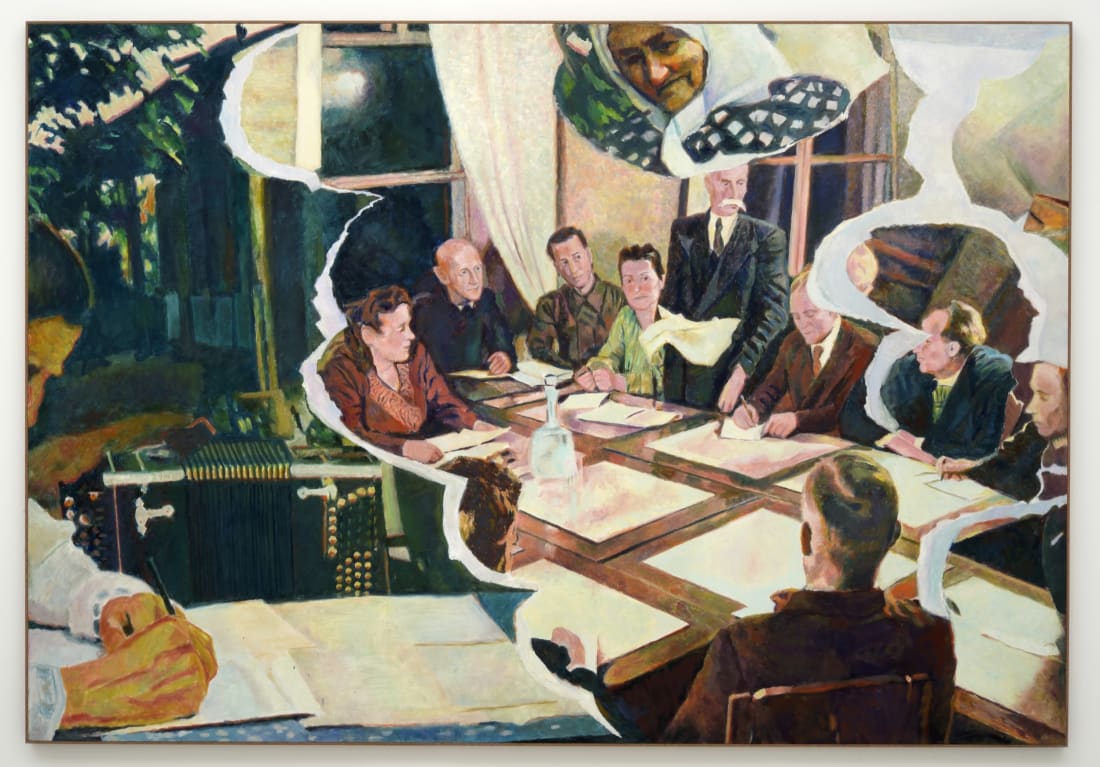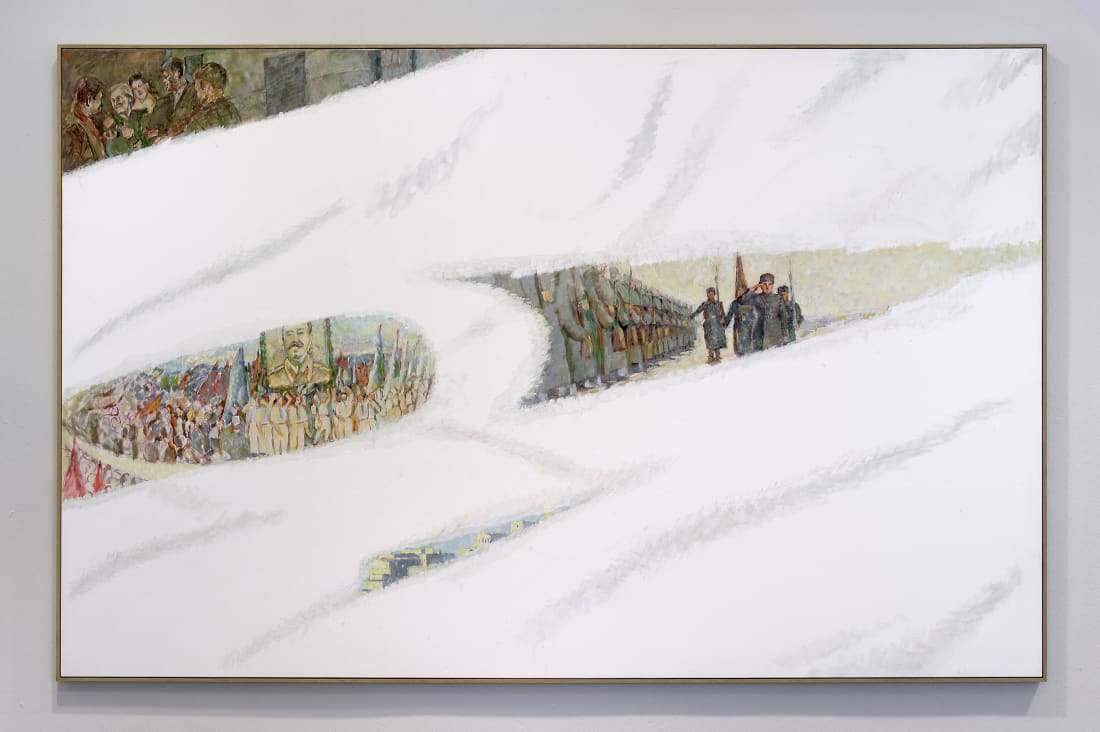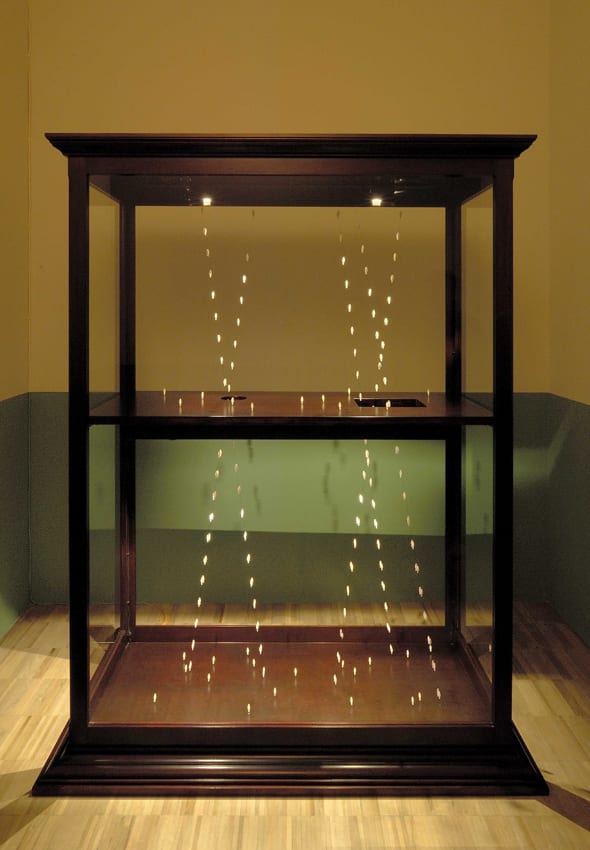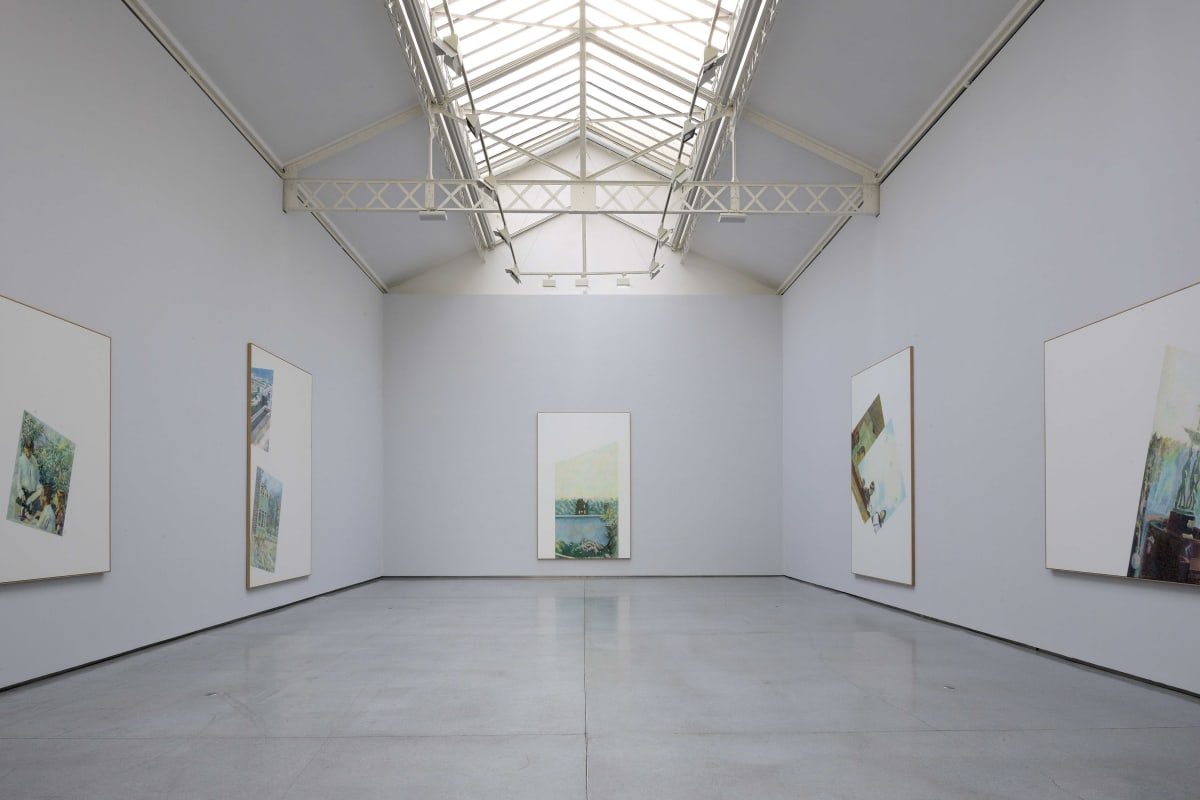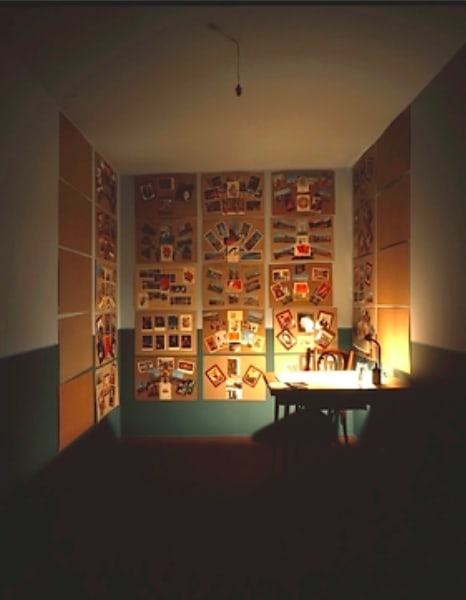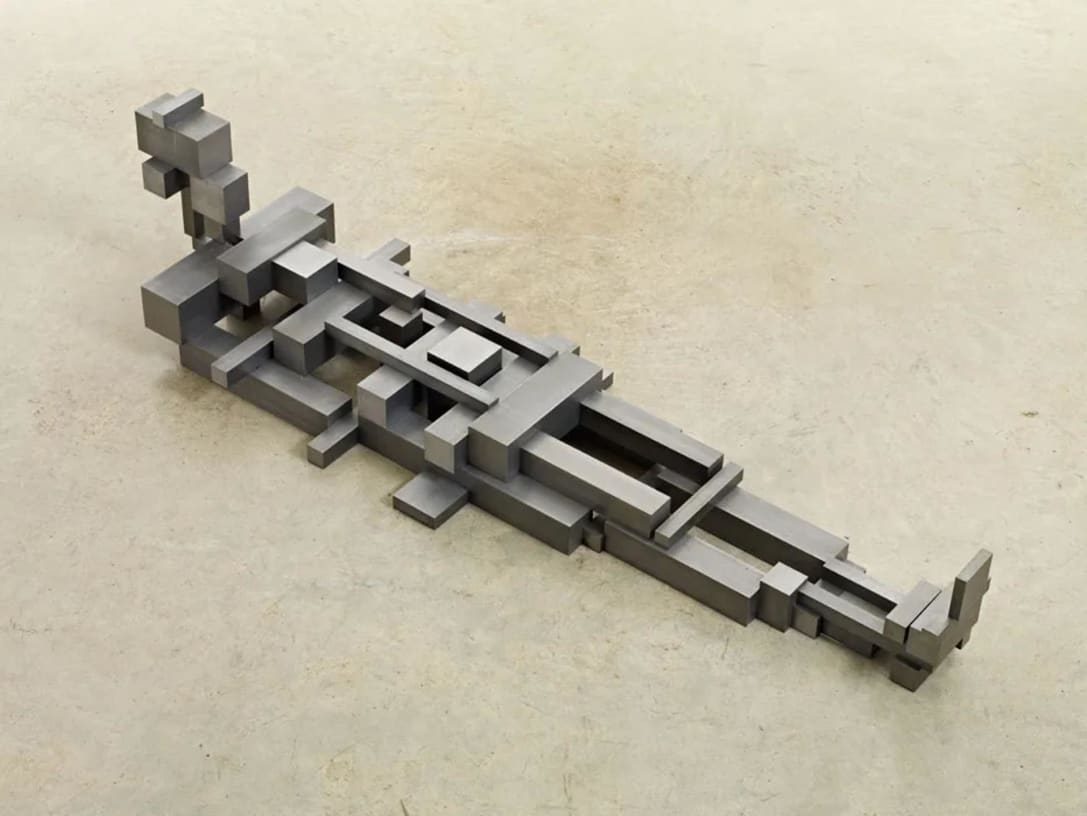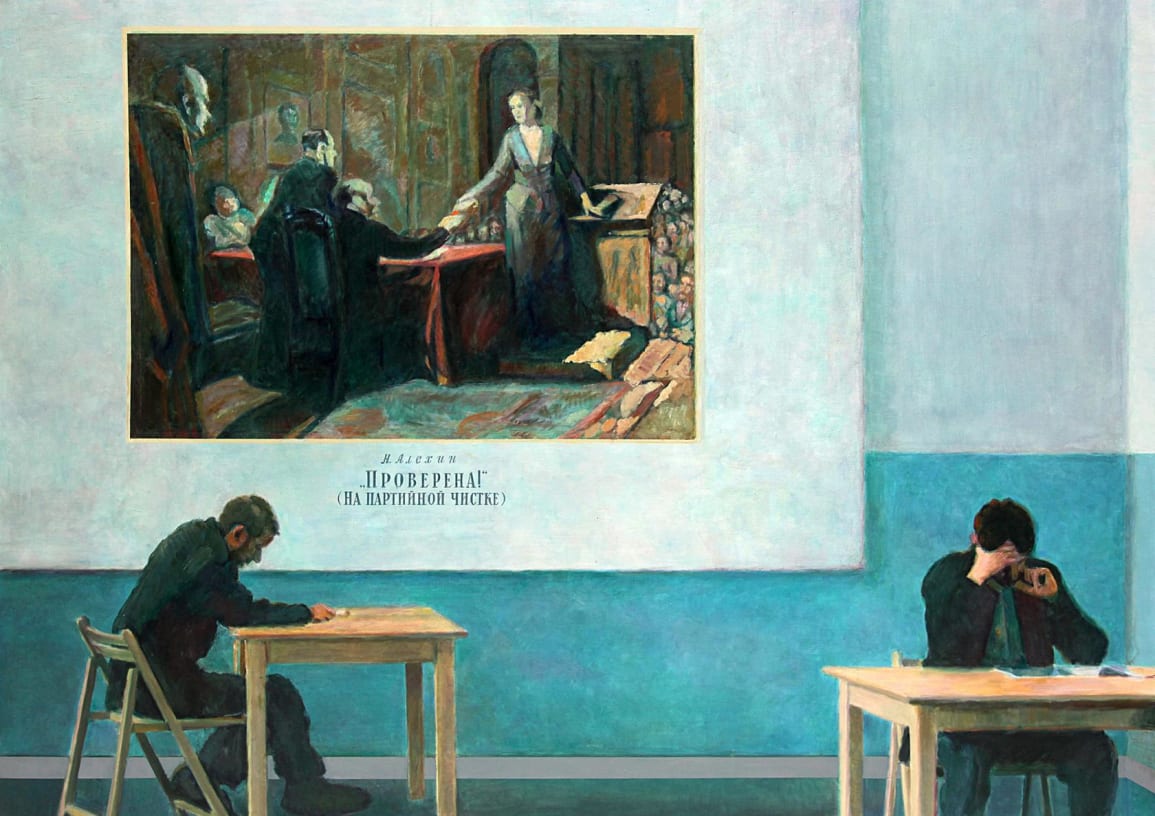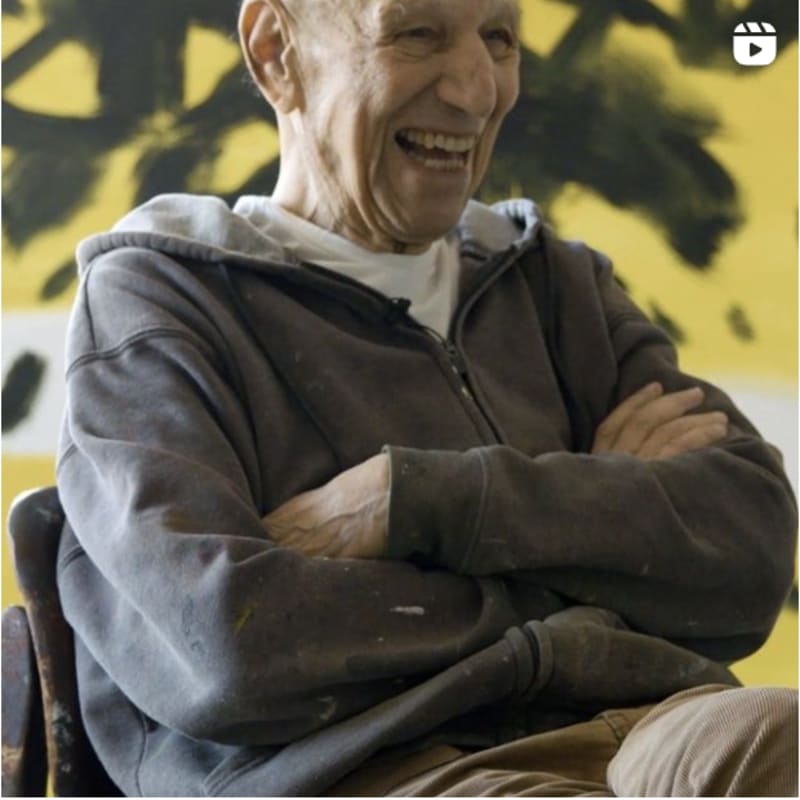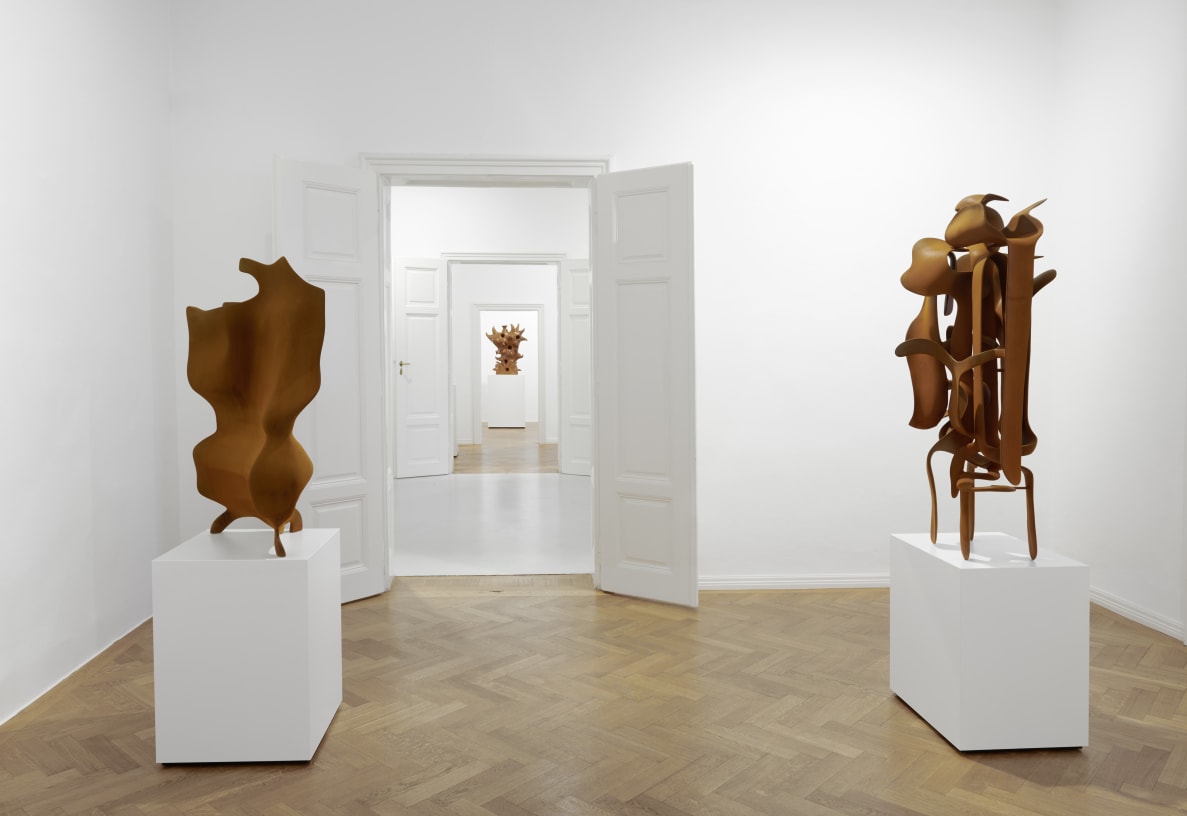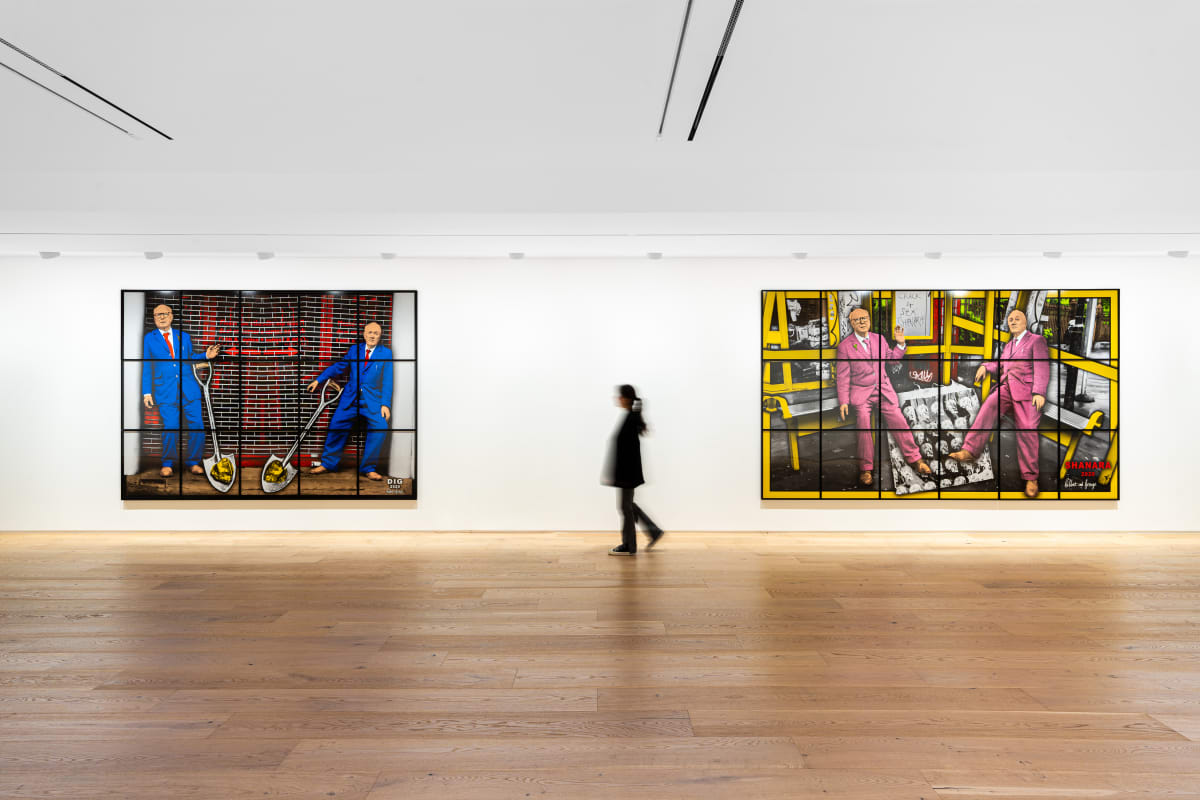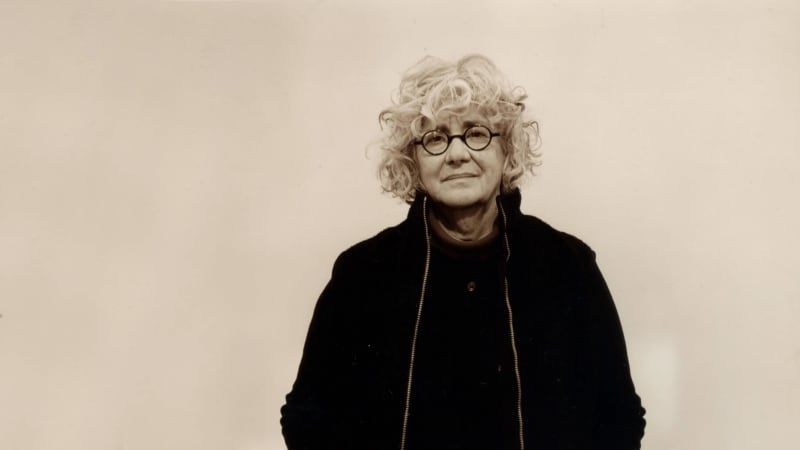

Ilya & Emilia Kabakov
Overview
'Our life consists of our work, dreams and discussions. We are lucky: we manage to transform reality into fantasy and permanently stay there.'
Ilya and Emilia Kabakov are best known for their pioneering 'total installations', which completely immerse the viewer in a dramatic, constructed environment. These installations, together with paintings and works on paper, are informed by their shared Soviet background but also engage with universal themes such as personal or collective memory, fantasy and illusion. Often populated by fictional characters, their works draw upon the optimistic idealisation of Socialist Realist visual culture, which is sharply contrasted with the dreary reality of daily life in cramped communal apartments. While their visions of utopia are undercut with dark undercurrents of power and oppression, there is an inherent humanity and hope to these works that suggests the possibility of a brighter future.
Ilya and Emilia Kabakov were both born in Dnipropetrovsk, Ukraine, in the former USSR and later settled in the United States. Ilya studied at the V.I. Surikov Art Institute in Moscow and began his career as a children's book illustrator during the 1950s, also becoming part of a group of Conceptual artists working outside the official Soviet art system. He was offered a fellowship at the Graz Kunstverein, Austria in 1987, afterwards settling in New York, where he reconnected with Emilia Lekach. She had trained as a classical pianist and studied Spanish literature before emigrating to Israel in 1973 and then, in 1975, to New York, where she worked as a curator and art dealer. They worked collaboratively from their home in Long Island from 1989 up to Ilya's passing in 2023.
Ilya and Emilia Kabakov are best known for their pioneering 'total installations', which completely immerse the viewer in a dramatic, constructed environment. These installations, together with paintings and works on paper, are informed by their shared Soviet background but also engage with universal themes such as personal or collective memory, fantasy and illusion. Often populated by fictional characters, their works draw upon the optimistic idealisation of Socialist Realist visual culture, which is sharply contrasted with the dreary reality of daily life in cramped communal apartments. While their visions of utopia are undercut with dark undercurrents of power and oppression, there is an inherent humanity and hope to these works that suggests the possibility of a brighter future.
Ilya and Emilia Kabakov were both born in Dnipropetrovsk, Ukraine, in the former USSR and later settled in the United States. Ilya studied at the V.I. Surikov Art Institute in Moscow and began his career as a children's book illustrator during the 1950s, also becoming part of a group of Conceptual artists working outside the official Soviet art system. He was offered a fellowship at the Graz Kunstverein, Austria in 1987, afterwards settling in New York, where he reconnected with Emilia Lekach. She had trained as a classical pianist and studied Spanish literature before emigrating to Israel in 1973 and then, in 1975, to New York, where she worked as a curator and art dealer. They worked collaboratively from their home in Long Island from 1989 up to Ilya's passing in 2023.
The Kabakovs' early work was shown at the Stedelijk Museum, Amsterdam (1990); The Museum of Modern Art, New York (1991); Los Angeles County Museum of Art (1992); Museum für Moderne Kunst, Frankfurt (1995); and Centre Pompidou, Paris (1996), among others. They represented Russia at the Venice Biennale in 1993 with their installation The Red Pavilion and were included in the 1997 Whitney Biennial. Other important installations include: We Are Leaving Here Forever, Carnegie International 1991, Carnegie Museum of Art, Pittsburgh (1991); The Big Archive, Stedelijk Museum, Amsterdam (1993); We Are Living Here, Centre Pompidou, Paris (1995); and The Strange City, Monumenta 2014, Grand Palais, Paris (2014). A restrospective of their work was the inaugural exhibition at the Garage Museum of Contemporary Art, Moscow, when it opened in 2008. More recently, a major retrospective of their work, Not Everyone Will Be Taken Into the Future, opened at Tate Modern, London in 2017, travelling to the Tretyakov Gallery, Moscow and The State Hermitage Museum, St Petersburg in 2018. Solo exhibitions of their work have been held at international institutions, including Dallas Contemporary (2021); Kunsthalle Rostock, Germany (2018); Kistefos Museum Sculpture Park, Oslo (2017); Hirshhorn Museum and Sculpture Garden, Washington, D.C. (2017); Power Station of Art, Shanghai (2015); and Sprengel Museum, Hanover (2014). They have received numerous honours and awards, including both the Chevalier and the Commandeur des Arts et des Lettres from France (1995 and 2014) and the Oskar Kokoschka Prize from Austria (2002). They have also received honourary degrees from the Moscow Art Academy, the Sorbonne, Paris and the Academy of Fine Arts Vienna.
The Ship of Tolerance is a travelling collaborative art project intended to promote understanding and unity, with sails stitched together from silk paintings by local schoolchildren from diverse backgrounds. Since its first inception in Siwa, Egypt in 2005, it has been shown in venues across the globe, including the Chicago River (2019); the River Thames near Tate Modern, London (2019), Accademia di Belle Arti, Rome (2017); Kunsthaus Zug, Switzerland (2016); and Garage Museum of Contemporary Art, Moscow (2013), as well as at the Havana Biennial (2012); Sharjah Biennial (2011); and Venice Biennale (2007). The Ship of Tolerance was awarded the prestigious Cartier Prize for the Best Art Project of the Year in 2010.
Videos





Artworks
Exhibitions
Publications



Ilya & Emilia Kabakov
Flying
Publications

Ilya & Emilia Kabakov

Ilya & Emilia Kabakov

Ilya & Emilia Kabakov

